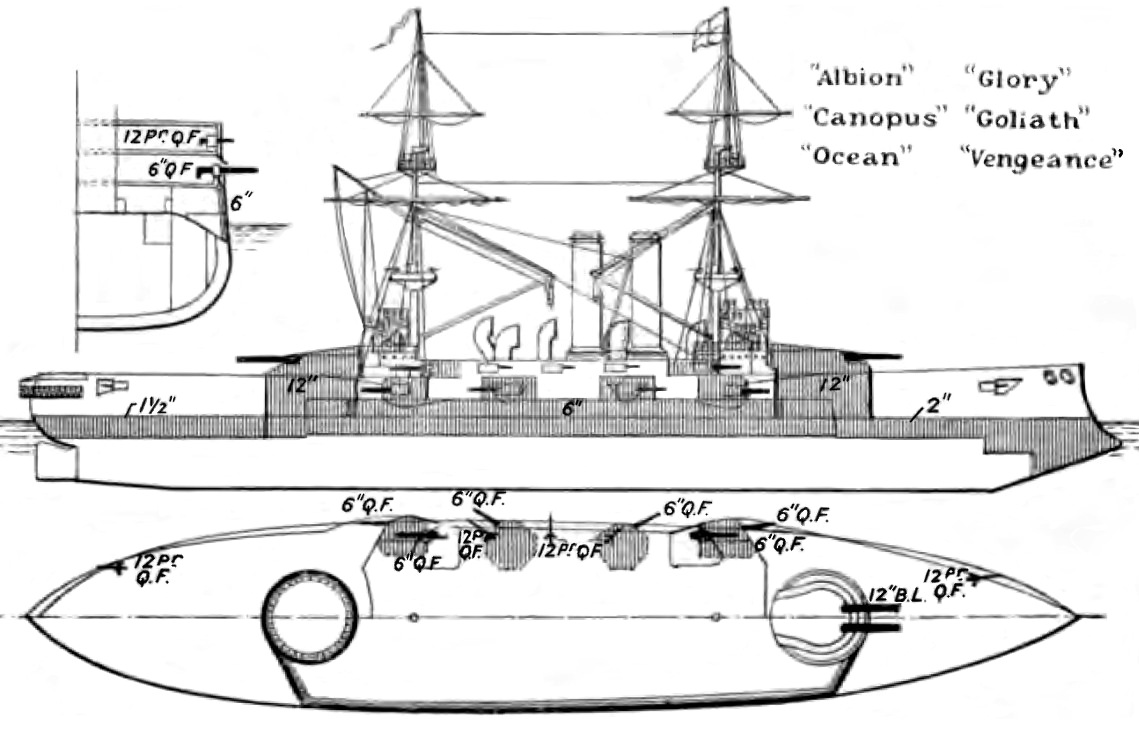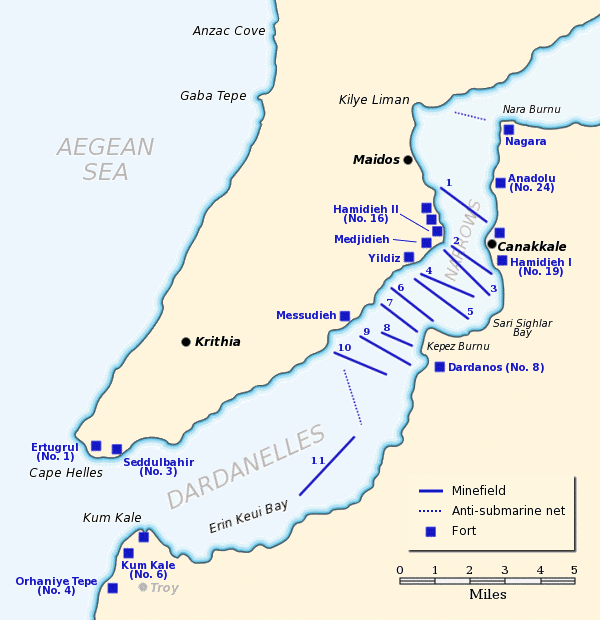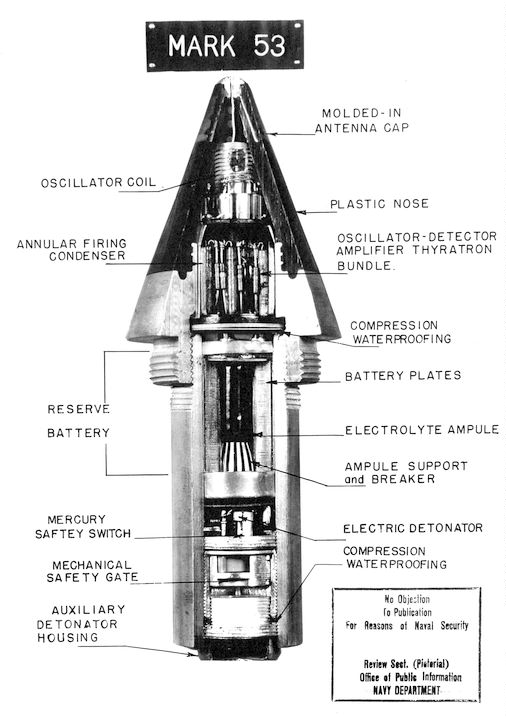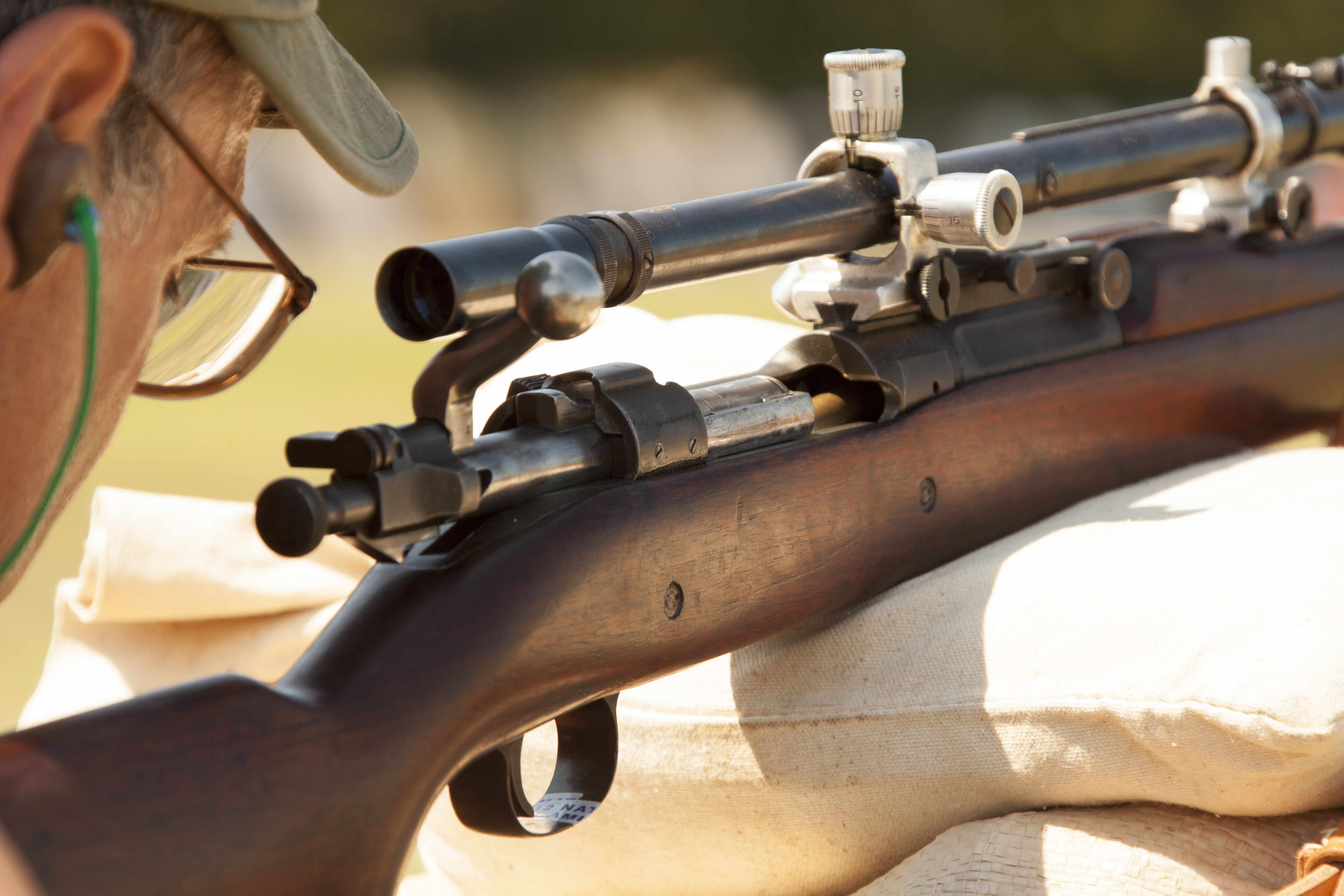|
BL 12-inch Mk VIII Naval Gun
The BL 12-inch Mark VIII naval gunMark VIII = Mark 8. Britain used Roman numerals to denote marks (models, abbreviated Mk) of ordnance until after World War II. Hence this was the 8th model of British 12-inch breech-loading naval guns, was one of the first large British rifled breech-loader, rifled breech-loading naval guns designed for the higher pressures generated by the new cordite propellant of the 1890s, and Britain's first large British ordnance terms#Wire-wound, wire-wound gun. It represented a major advance compared to previous British guns. Naval service The gun was installed on the Majestic-class battleship, ''Majestic''-class battleships from 1895 and on the Canopus-class battleship, ''Canopus''-class battleships from 1899. During World War I guns removed from the obsolete ''Majestic'' class were mounted in Lord Clive-class monitor, ''Lord Clive''-class monitors for shore bombardment. Land service From 1921 to 1926 two guns from the decommissioned battleship HMS I ... [...More Info...] [...Related Items...] OR: [Wikipedia] [Google] [Baidu] |
HMS Canopus (1897)
HMS ''Canopus'' was a pre-dreadnought battleship of the British Royal Navy and the lead ship of the . Intended for service in Asia, ''Canopus'' and her sister ships were smaller and faster than the preceding s, but retained the same battery of four guns. She also carried thinner armour, but incorporated new Krupp steel, which was more effective than the Harvey armour used in the ''Majestic''s. ''Canopus'' was laid down in January 1897, launched in October that year, and commissioned into the fleet in December 1899. ''Canopus'' served in the Mediterranean Fleet upon commissioning until 1903, when she was decommissioned for refitting. In 1905, she was sent to East Asia, but the renewal of the Anglo-Japanese Alliance that year rendered her presence in Asian waters unnecessary. She instead returned to Britain and served with several fleet commands in British waters, including the Atlantic Fleet, the Channel Fleet, and finally the Home Fleet. Another short deployment to th ... [...More Info...] [...Related Items...] OR: [Wikipedia] [Google] [Baidu] |
Tyne Turrets
The Tyne Turrets were two 12-inch Mk VIII guns from the battleship HMS ''Illustrious'', installed in Roberts Battery at Hartley, near Seaton Sluice north of the Tyne, and Kitchener Battery in Marsden near Lizard Point south of the river. The batteries were planned in World War I but only commissioned in 1921, and after a change of heart scrapped in 1926. This very heavy armament was only rivalled by the Dover harbour Admiralty Pier Turret at the time. References * Hogg, R., "The Tyne Turrets:coastal defence in the First World War", ''Fort'' (Fortress Study Group The Fortress Study Group is a charity registered in the UK with an international membership. Its purpose is advancing the study of post-medieval artillery fortifications throughout the World. History The Fortress Study Group was formed in June 1 ...), (12), 1984, pp. 97–104 * National Archives, Kew. Plans for Kitchener/Roberts Batteries WO 78.4973 and WO 78.4974 20th-century forts in England Buildings a ... [...More Info...] [...Related Items...] OR: [Wikipedia] [Google] [Baidu] |
Ernest Brooks (photographer)
Ernest Brooks (23 February 1876 – 1957) was a British photographer, best known for his war photography from the First World War. He was the first official photographer to be appointed by the British military, and produced several thousand images between 1915 and 1918, more than a tenth of all British official photographs taken during the war. His work was often posed and formal, but several of his less conventional images are marked by a distinctive use of silhouette. Before and immediately after the war he worked as an official photographer to the Royal Family, but was dismissed from this appointment and stripped of his official honours in 1925, for reasons that were not officially made public. Early life Brooks was born on 23 February 1876 at Draycott Moor near Faringdon, the son of a farm labourer. He grew up near Windsor, Berkshire, where his father afterwards worked in the Great Park, and as a child frequently encountered members of the Royal Family.Brooks (1921), ... [...More Info...] [...Related Items...] OR: [Wikipedia] [Google] [Baidu] |
HMS Ocean (1898)
The fourth HMS ''Ocean'' was a pre-dreadnought battleship of the British Royal Navy and a member of the . Intended for service in Asia, ''Ocean'' and her sister ships were smaller and faster than the preceding s, but retained the same battery of four guns. She also carried thinner armour, but incorporated new Krupp steel, which was more effective than the Harvey armour used in the ''Majestic''s. ''Ocean'' was laid down in December 1897, launched in July 1898, and commissioned into the fleet in February 1900. She entered service with the Mediterranean Fleet until January 1901, when she was transferred to the China Station. ''Ocean'' was recalled from China in 1905 for service with the Channel Fleet after a period spent in reserve. From 1908 to early 1910, she was again assigned to the Mediterranean Fleet. She was assigned to the Home Fleet in 1910 and saw little activity until the outbreak of the First World War in August 1914. At the start of the conflict, she was as ... [...More Info...] [...Related Items...] OR: [Wikipedia] [Google] [Baidu] |
HMS Hannibal (1896)
HMS ''Hannibal'' was a pre-dreadnought battleship built for the Royal Navy, and the sixth ship to bear the name HMS ''Hannibal''. The ship was laid down at the Pembroke Dock in May 1894, she was launched in April 1896, and commissioned into the fleet in April 1898. She was armed with a main battery of four guns and a secondary battery of twelve guns. The ship had a top speed of . ''Hannibal'' served with the Channel Fleet (later reorganised to the Atlantic Fleet) after commissioning in 1898. In 1906 she underwent a refit, which included a conversion from a coal burner to using oil. She was placed in reserve from 1907, only to be mobilised in July 1914 as a precautionary measure prior to the outbreak of World War I. From August 1914 to February 1915 ''Hannibal'' was a guard ship at Scapa Flow. Later that year, her main armament was removed and she was converted to a troopship, serving in this capacity during the Dardanelles campaign. From November 1915 to the end of the w ... [...More Info...] [...Related Items...] OR: [Wikipedia] [Google] [Baidu] |
Emery (mineral)
Emery, or corundite, is a dark granular rock used to make abrasive powder. It largely consists of corundum (aluminium oxide), mixed with other minerals such as the iron-bearing spinels, hercynite, and magnetite, and also rutile (Titanium dioxide, titania). Industrial emery may contain a variety of other minerals and synthetic compounds such as Magnesia (mineral), magnesia, mullite, and silica. It is black or dark grey in colour, less dense than translucent-brown corundum with a specific gravity of between 3.5 and 3.8. Because it can be a mixture of minerals, no definite Mohs scale of mineral hardness, Mohs hardness can be assigned: the hardness of corundum is 9 and that of some spinel-group minerals is near 8, but the hardness of others such as magnetite is near 6. Crushed or naturally eroded emery (known as ''black sand'') is used as an abrasive—for example, on emery boards and emery cloth. It is also used as a traction enhancer in asphalt and Tarmacadam, tarmac mixtures. ... [...More Info...] [...Related Items...] OR: [Wikipedia] [Google] [Baidu] |
Aventurier-class Destroyer
The ''Aventurier''-class destroyers were a group of four destroyers built during the early 1910s. Originally ordered by Argentina, they were taken over by the French Navy when the First World War began in August 1914, completed with French armament and renamed. Design and description The ''Aventurier''-class ships were significantly larger and more heavily armed than other French destroyers of the period. The ships had an overall length of , a beam of , and a draft of . They displaced at normal load and at deep load. Their crew numbered 140 men.Smigielski, p. 204 The ships were powered by a pair of Rateau steam turbines, each driving one propeller shaft using steam provided by five mixed-firing Foster-Wheeler boilers. The engines were designed to produce which was intended to give the ships a speed of . The ships carried of coal and of fuel oil that gave them a range of at a cruising speed of .Couhat, p. 117 The primary armament of the ''Aventurier''-class ships consist ... [...More Info...] [...Related Items...] OR: [Wikipedia] [Google] [Baidu] |
Shell (projectile)
A shell, in a military context, is a projectile whose payload contains an explosive, incendiary, or other chemical filling. Originally it was called a bombshell, but "shell" has come to be unambiguous in a military context. Modern usage sometimes includes large solid kinetic projectiles that is properly termed shot. Solid shot may contain a pyrotechnic compound if a tracer or spotting charge is used. All explosive- and incendiary-filled projectiles, particularly for mortars, were originally called ''grenades'', derived from the French word for pomegranate, so called because of the similarity of shape and that the multi-seeded fruit resembles the powder-filled, fragmentizing bomb. Words cognate with ''grenade'' are still used for an artillery or mortar projectile in some European languages. Shells are usually large-caliber projectiles fired by artillery, armored fighting vehicles (e.g. tanks, assault guns, and mortar carriers), warships, and autocannons. The shape ... [...More Info...] [...Related Items...] OR: [Wikipedia] [Google] [Baidu] |
Fuze
In military munitions, a fuze (sometimes fuse) is the part of the device that initiates function. In some applications, such as torpedoes, a fuze may be identified by function as the exploder. The relative complexity of even the earliest fuze designs can be seen in cutaway diagrams. A fuze is a device that detonates a munition's explosive material under specified conditions. In addition, a fuze will have safety and arming mechanisms that protect users from premature or accidental detonation. For example, an artillery fuze's battery is activated by the high acceleration of cannon launch, and the fuze must be spinning rapidly before it will function. "Complete bore safety" can be achieved with mechanical shutters that isolate the detonator from the main charge until the shell is fired. A fuze may contain only the electronic or mechanical elements necessary to signal or actuate the detonator, but some fuzes contain a small amount of primary explosive to initiate the detonation. ... [...More Info...] [...Related Items...] OR: [Wikipedia] [Google] [Baidu] |
Gun Barrel
A gun barrel is a crucial part of gun-type weapons such as small firearms, artillery pieces, and air guns. It is the straight shooting tube, usually made of rigid high-strength metal, through which a contained rapid expansion of high-pressure gas(es) is used to propel a projectile out of the front end ( muzzle) at a high velocity. The hollow interior of the barrel is called the bore, and the diameter of the bore is called its caliber, usually measured in inches or millimetres. The first firearms were made at a time when metallurgy was not advanced enough to cast tubes capable of withstanding the explosive forces of early cannons, so the pipe (often built from staves of metal) needed to be braced periodically along its length for structural reinforcement, producing an appearance somewhat reminiscent of storage barrels being stacked together, hence the English name.''A History of Warfare'' - Keegan, John, Vintage 1993. History Gun barrels are usually metal. However, the e ... [...More Info...] [...Related Items...] OR: [Wikipedia] [Google] [Baidu] |
Muzzle (firearms)
A gun barrel is a crucial part of gun-type weapons such as small firearms, artillery pieces, and air guns. It is the straight shooting tube, usually made of rigid high-strength metal, through which a contained rapid expansion of high-pressure gas(es) is used to propel a projectile out of the front end ( muzzle) at a high velocity. The hollow interior of the barrel is called the bore, and the diameter of the bore is called its caliber, usually measured in inches or millimetres. The first firearms were made at a time when metallurgy was not advanced enough to cast tubes capable of withstanding the explosive forces of early cannons, so the pipe (often built from staves of metal) needed to be braced periodically along its length for structural reinforcement, producing an appearance somewhat reminiscent of storage barrels being stacked together, hence the English name.''A History of Warfare'' - Keegan, John, Vintage 1993. History Gun barrels are usually metal. However, the earl ... [...More Info...] [...Related Items...] OR: [Wikipedia] [Google] [Baidu] |






